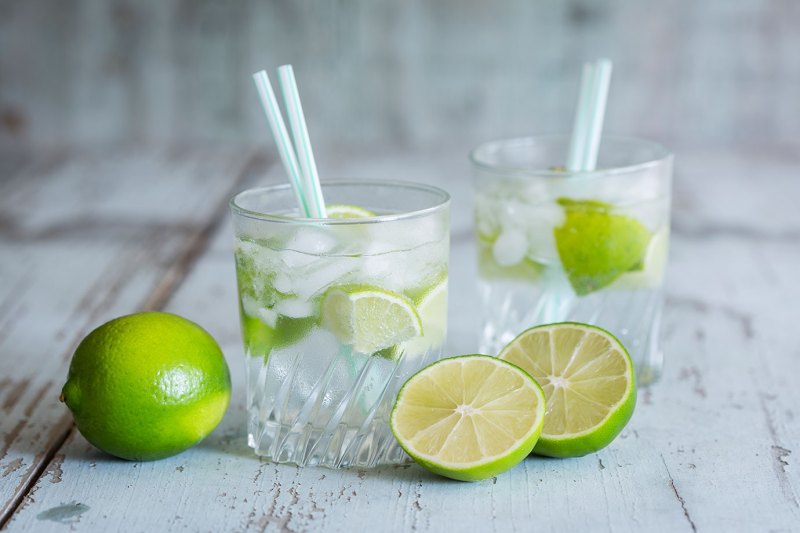Weight-loss tricks come in many shapes and sizes: cleanses, intermittent fasting, outrageous diets.
But when it comes to keeping your weight in check, there’s just no getting around the surefire formula of regular exercise and a nutritious, whole-food diet. No shortcuts have ever proven to work better.
This Diet Could Lower Your Risk of Heart Disease by 32 Percent
In fact, since the 1990s, it’s been widely published and accepted that the ideal way to lose weight is a perfect brew of diet and exercise. And while there are plenty of gym hacks and exercise strategies to make your fitness regime tougher and more effective, what weight-loss tricks can you get through dieting? What easy, comprehensive eating methods can help you shed pounds quicker?
There are countless hacks, tricks, and tips that can speed up weight loss by helping you eat less, make better food choices, and get started down a healthier path. Adjust what you stock in your pantry, alter your meal scheduling, and manipulate your serving sizes to lose that holiday weight as fast as possible. Here are 20 ways to lose weight without the gym that’ll help kickstart your fat-loss journey.
Do You Need to Take Vitamin D Supplements in Wintertime? Here’s What the Experts Say

We’ve all polished off a delicious meal, immediately gone back for seconds, then realized too late that we’re uncomfortably stuffed. That’s because it takes up to 20 minutes for your brain to register that you’re full, says nutritionist Wesley Delbridge, of the Academy of Nutrition and Dietetics. “Before having another helping, wait 10 to 20 minutes and drink a glass of water,” he says. “If you’re still hungry after that, then have a smaller second serving.” Chances are, though, you’ll realize you don’t actually want more.
Charlie Schuck/Getty Images

Whether you’re eating a sirloin, salmon fillet, bagel, or omelet, try cutting your food into small pieces before taking a single bite. In a recent Arizona State University study, participants given a cut-up bagel ate less of it than those handed an intact bagel. They also consumed less food at a free lunch served 20 minutes later. The researchers say pre-cutting food makes each bite more satisfying, thereby helping with portion control.
Anchiy / Getty Images

Once you’ve finished lunch or dinner, bust out the toothbrush or dental floss, suggests nutritionist Heather Mangieri, owner of Nutrition CheckUp in Pittsburgh. When your teeth feel clean and your breath is minty, you’ll be less apt to nibble mindlessly.
PeopleImages / Getty Images

Traveling for business can make it super tough to eat healthy. To lessen your likelihood of ordering fattening entrées on a whim, Delbridge advises figuring out which restaurants you’ll hit, researching their menus online, and making healthy choices ahead of time. He also suggests taking advantage of the coffee maker and packet of instant oatmeal in your hotel room. That quick, small breakfast or snack can at least tide you over until you can find something more substantial and nutritious.
Jan Stromme/Getty Images

Nobody wants to dine with a tally sheet. However, tracking the number of bites you take per day can help you trim excess calories from your diet. Brigham Young University researchers recently asked a group of students to count their daily bites and then reduce that number by 20 percent throughout the next month. Those who did so lost an average of four pounds. This isn’t rocket science—slashing calories oftentimes leads to weight loss—but it’s a way to get a sense of your eating habits so you can improve them.
Mark Wragg / Getty Images

If you’re going to cave to a candy craving (hey, it happens), pick up some Starburst, Jolly Ranchers, or another kind that comes in a wrapper. You’ll probably eat less than if you’d chosen wrapper-less candy like Skittles or Twizzlers Nibs. A Swiss study found that people who were told to take freely from a bowl of wrapped candy ate just three pieces on average while those offered unwrapped sweets gobbled down five. The tiny effort required to unwrap something can be enough to slow you down and deter you from taking more.
LauriPatterson/Getty Images

If you’ve never quite figured out how to use chopsticks, now’s the time to learn. They require more dexterity and precision than a fork, forcing you to slow down. This is especially helpful for big noodle bowls and rice dishes, which are really easy to overeat. But chopsticks aren’t limited to Asian cuisine. Try using them for baked fish, sautéed veggies, or even a green salad.
Digni/Getty Images

Let’s say you land at a cheesy chain restaurant with new co-workers. Or maybe a client chooses a lunch spot that you know has blah food. In these situations, opt for the healthiest menu option available rather than ordering something that sounds delicious but probably won’t be. For instance, the smothered steak sandwich or a creamy pasta dish might look enticing, but you’ll likely be underwhelmed by the flavor—and you’ll have consumed an insane amount of calories in the process. Instead, go for the plain grilled chicken breast or ask if they can turn the garden salad into a full-size portion. Save the decadent stuff for reputable restaurants and places you already frequent and know will not disappoint.
Burcu Atalay Tankut/Getty Images

“Setting boundaries around when you’re allowed to eat can help you stay focused on your goals,” Mangieri says. “For example, make a rule that your kitchen ‘closes’ at 7 p.m. so you’re not tempted to eat late at night.”
Caiaimage/Robert Daly/Getty Images

At family-style dinner parties or when dining out with a group, grab a seat at the end of the table. Sure, the middle might be where the action is, but it’s also where the appetizers, bread bowl, and main entrées are placed. Sitting on an end will make it tougher for you to mindlessly scoop seconds onto your plate.
PeopleImages/Getty Images

Before cutting into a New York strip or twirling your fork in linguini, pause and take a few good whiffs. Stop between bites to sniff your food some more. Evidence suggests smelling your favorite foods sends the same signals of pleasure and fullness to your brain as tasting them, potentially helping you eat less.
Shapecharge/Getty Images

To help you kick a soda or juice habit, keep a clear pitcher of filtered water infused with cucumbers, lemons, strawberries, basil, or mint in your fridge at all times. It’ll look fresh and tasty, encouraging you to pour a glassful, and offer a subtle flavor that’s more exciting than plain water—but not full of calories.
Westend61/Getty Images

You’ve probably heard the size of your plate can influence how much you eat. It turns out plate color matters too. According to research from Cornell University’s Food and Brand Lab, participants piled 22 percent less food on their plates when the plate color contrasted that of the entrée, versus when the two hues matched. Obviously, the color of your food changes with each meal, and you’re not going to pull out different dishes every time. That said, what’s the one color that virtually no food matches? Blue. Research also shows blue is calming, which could help you eat slower. Just something to think about when you’re in the market for new dishes or buying disposable plates.
Johner Images / Getty Images

Here’s yet another reason to quit diet soda: Although diet soda drinkers consume fewer total calories per day than people who drink sugary sodas or booze, a greater percentage of their daily calories comes from nutrient-void junk food. It’s unclear whether that’s because diet soda fans think they can afford more calories so they make worse food choices or because artificially sweetened beverages trigger cravings for high-sugar, high-fat, and high-sodium foods. Either way, though, ditching diet soda may be a secret trick to eating less garbage.
Sorapong Chaipanya / EyeEm / Getty Images

Some of the most accessible snack foods—pretzels, crackers, chips—scratch the itch, but only temporarily. Before you know it, you’ll be reaching for more food after these carbs. “Make sure every snack is balanced, consisting of some carb, protein, fat, and fiber,” Delbridge says. “This is the best way to stay full and control the body’s insulin response and digestion.” Our suggestion? Unsalted nuts.
William Shaw/Getty Images

Make a point to use more chili peppers and other spices in your cooking—in homemade soups, salad dressings, meat marinades, and even breakfast scrambles. Along with potentially lowering your risk of heart disease and cancer, spicy foods may help you lose weight. The secret weapon is capsaicin, the compound that gives peppers their spice. There’s some evidence that it activates the same brain receptors that tell you you’re full, leading you to eat less. Capsaicin also may prompt your body to turn jiggly white fat into energy-burning brown fat.
Maximilian Stock Ltd./Getty Images

“Willpower rarely works when you can satisfy an unhealthy food craving just by walking over to the refrigerator or cupboard,” Mangieri says. You can’t eat what isn’t there, so you’re better off not having tempting treats lying around. “Make it so if you really want a treat, you’ll have to get in your car and drive to get it,” she adds. “Oftentimes, that effort is enough to keep you from caving.”
fcafotodigital / Getty Images

Beginning a meal with a cup of low-calorie, broth-based soup can help you consume up to 20 percent fewer calories overall, according to Penn State research. The reason is simple: Soup is mostly liquid, so it fills you up faster. But you have to go with low-cal kinds like spinach-and-tomato or French onion (without the gobs of cheese and croutons, of course). Creamy potato and white-bean chili will fill you up too, but they’ll tack tons of extra calories onto the meal.
istetiana/Getty Images

You sit down at a restaurant intending to order a salad, wrap, or something else that’s small and semi-healthy. Then one guy at your table starts talking about buffalo wings. Another says he’s leaning toward the bacon cheeseburger and asks if anyone wants spinach-artichoke dip to start. Research has long shown that if fellow diners choose unhealthy foods, you’re much more likely to do the same. Once in a while is no big deal, but if you eat out a lot, you have to stick to your guns and not let others sway your order. Before even arriving at the restaurant, make a promise to yourself that you won’t change your decision last-minute based on what others are getting.
Klaus Vedfelt / Getty Images

Wine is one of the sneakiest sources of extra calories, and it’s so easy to drink more than you think—especially when using jumbo glasses. Cornell Food and Brand Lab scientists found that people pour themselves 12 percent more wine when using wide-bottom glasses and another 12 percent more when they hold the glass when pouring versus setting it on the table. To better control your portions, opt for smaller and thinner wine glasses and set the glass down before pouring.
Westend61 / Getty Images
The post 20 Weight-loss Tricks That Actually Work appeared first on Men's Journal.
Comments are closed.